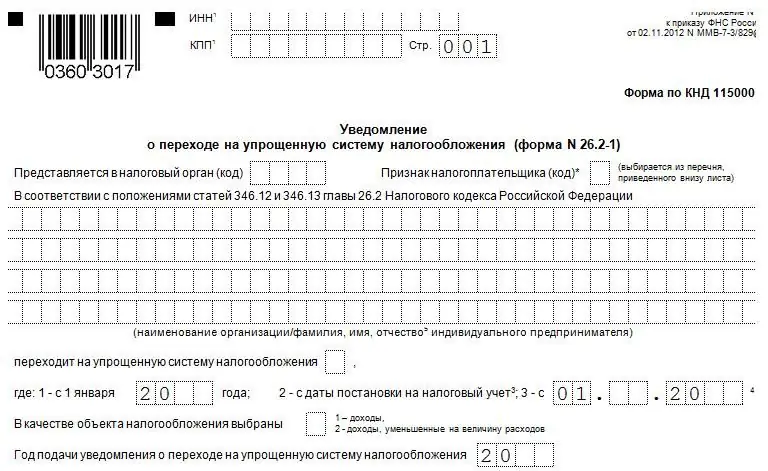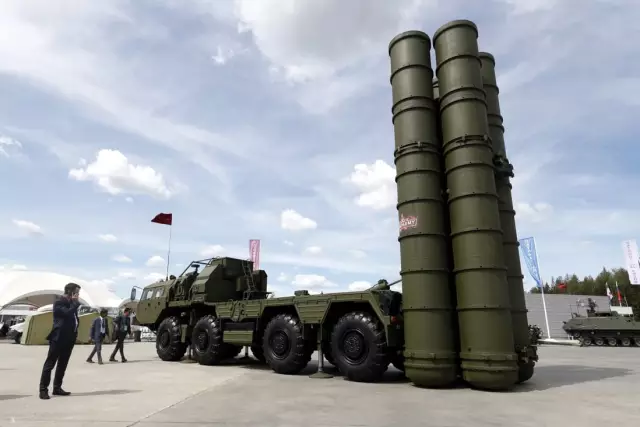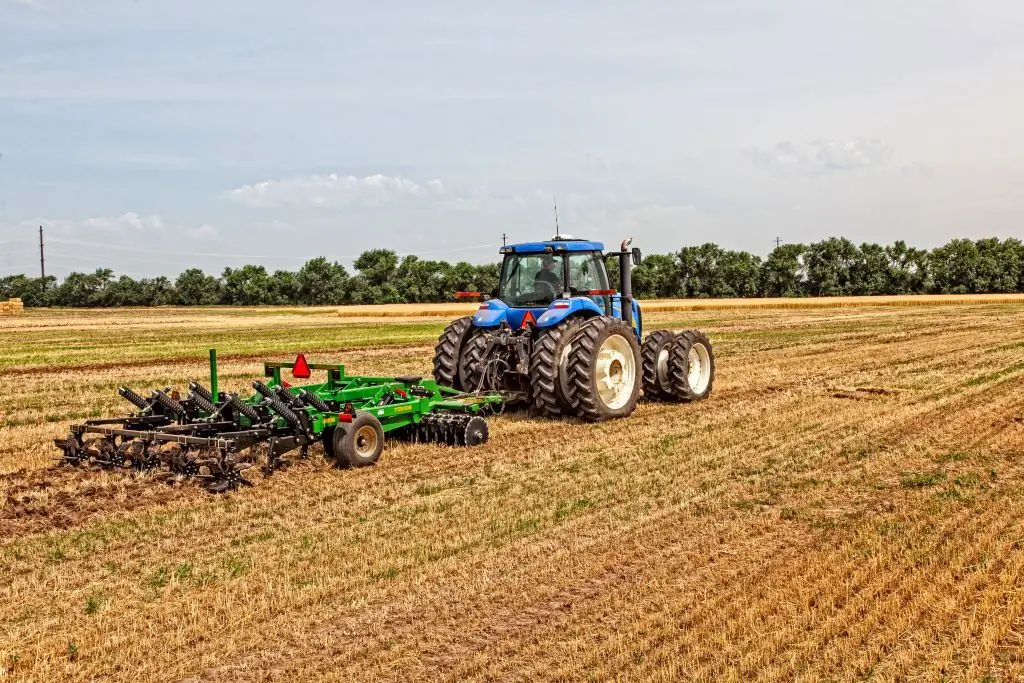2026 Author: Howard Calhoun | [email protected]. Last modified: 2025-01-24 13:10:32
Probably every person who is interested in agriculture has heard such a term as pre-sowing tillage. This is really important work, which many people who are not interested in this issue have not even heard of. And it’s completely in vain - correctly and timely processing allows you to achieve excellent results, so it will be useful for every person to learn about it at least briefly.
What is this?
Speaking about the technology of pre-sowing tillage, experts usually mean a complex set of works carried out some time before sowing crops. However, some of them are also carried out immediately after sowing, if circumstances so require.

In general, processing may include various stages of work: cultivation, mulching, rolling, harrowing and others. However, only experienced professionalscan decide which steps of preparation should be carried out in a particular situation. It depends on many important factors: the type of soil, its moisture content, climate, crops grown, and a number of others. An attempt to write down all the rules in detail will lead to the fact that you have to write a whole book about the various methods of pre-sowing tillage. Therefore, we will try to describe this issue briefly and succinctly, touching only on the main points and rules.
Why is it done
To begin with, let's figure out why this rather complex and costly set of works is being carried out. In fact, the goals of seedbed preparation are quite numerous - they can all be achieved with the right implementation.
Of course, one of the main goals is weed control. They can cause a lot of problems when growing cultivated plants. At best, weeds will simply draw moisture and important trace elements from the soil, which are necessary for the growth of potatoes, wheat, corn and other valuable crops. Because of this, their productivity will decrease, and their immunity will worsen, so the risk of serious illness will increase. In the worst case, weeds will simply crush other plants due to the fact that they germinate earlier, are less whimsical and grow much faster. However, with timely cultivation of the soil, weeds are destroyed - both annual and perennial. If crops are planted shortly after cultivation is complete, they have time to grow and establish themselves before the weeds re-sprout from roots or preserved seeds. That's whythe probability of getting a rich result is significantly increased.
Another important goal that can be achieved through timely and proper soil preparation is moisture retention. Experienced specialists know well how important it is to keep the moisture left in the ground after the snow melts. It is she who can enable the seeds to germinate and strengthen, which ensures an excellent harvest. However, in hot, arid climates, moisture evaporates quickly, without having time to bring the slightest benefit. The problem is further exacerbated if windy weather sets in - dry wind quickly dries the soil, blowing out the remaining moisture. If soil locking is carried out correctly (and it is an important element of seedbed preparation), moisture loss can be significantly reduced.

As practice shows, high-quality processing of fields can significantly increase productivity - from 0.15 to 0.25 tons per hectare. More accurate information depends on what kind of crop is grown here.
What technique is used
Of course, on a plot of tens and hundreds of hectares, it is simply impossible to do all the work manually. Therefore, special machines are used for pre-sowing tillage. They are quite diverse - each is used for a specific job. Some samples of equipment are used to carry out the same processing, but in different situations. So, it will not be superfluous to deal with this issue.
However, today the same technique can be actively used in the fields,only having a variety of equipment, which can significantly reduce costs while maintaining the high efficiency of the work carried out. Often you need to choose the right one based on the characteristics of the site.
For example, if you have to work in a light area where the soil contains a large amount of sand, then the KPS-4A, KShP-8 and KShU-6 cultivators will be an excellent choice. Seedbed tillage units can be equipped with spring and lancet openers, as well as tooth and bar harrows. With good equipment, simple, inexpensive and not too powerful cultivators can cope with a rather difficult job.

If you have to work on more difficult areas - with loamy or even clay soils, low-power cultivators will not be able to cope with the processing. The best choice here would be more powerful equipment, such as KPE-3, 8. Usually it is equipped with a heavy disc harrow, which allows you to effectively cope with work even in such a problematic area.
The most difficult fields are considered to be those where nothing has been grown for several years and, accordingly, the land has not been cultivated, just overgrown with grass. In order to cope with such work qualitatively, especially powerful machines for seedbed preparation and specialized equipment will come in handy. A good choice would be disc harrows BDT-7 and BDT-10. They are able to qualitatively loosen the soil, while not extracting the sod of perennial weeds to the surface. Processing is carried out with the help of tooth harrows. In problem areas with a ridged surface, you can also use soil levelers, such as VPN-5, VPN-6 or VIP-5. Weed control becomes more effective when using a milling cultivator KFG-3, 6. Then it will be possible to loosen the soil, crumble blocks and level the surface in a single pass. This will create ideal conditions for growing almost any crop.
Good time to process
It is also very important to choose the time when pre-sowing tillage is carried out. It is dangerous here to hurry up and to be late.
For example, consider harrowing as an integral part of the seedbed tillage system. If carried out too early, when the soil is too wet, it will not loosen. Instead, it will become "smeared", after which it will be covered with a network of cracks, through which, when heated and even not too strong wind, an increased amount of moisture will be lost. Therefore, the whole complex of works will do more harm than good.

At the same time, there is no way to be late with such work. If you plow the site and do not subject it to timely harrowing, moisture loss will be simply huge. On average, on a warm windy day, up to 50 tons of moisture per day evaporate from one hectare of arable land. Of course, this is also unacceptable.
So an experienced farmer always gets the job done at the right time.
Optimal working depth
Another important question to whichit is impossible to give a definite answer. It depends on several factors. Firstly, you need to take into account the type of soil - sandy, black earth or clay, and secondly - what kind of crop will be grown here. For greater clarity, here are a few simple examples.
If the work is carried out on light soils containing a large amount of sand, then cultivation is carried out at a shallow depth - about 5-8 centimeters. Sandy soil allows seeds to quickly take root and grow, easily breaking through the soil layer.
Clay soils are less suitable for growing crops. On the one hand, air penetrates deeper, and the ability to breathe is extremely important for seeds. On the other hand, it is simply harder for plants to break through heavy clay. In addition, clay soils warm up worse, which is why crops develop more slowly. To prevent this from happening, deeper soil cultivation is used - by 10-12 centimeters. This loosens heavy soil and improves aeration.
There is a direct relationship between the depth of processing and culture. For example, if pre-sowing tillage is carried out for potatoes, then the depth will be maximum - about 30-35 centimeters. After all, the plant must be well rooted in order to be able to develop tubers underground.

But in the case of corn, a minimum depth is possible - depending on the type of soil, it makes no sense to go deeper. Corn has a superficial root system, which lies at a shallow depth. Much more important parameters are goodsoil aeration and warming up.
Basic tillage
If you talk in detail about the system of pre-sowing tillage, then first of all you should talk about plowing, harrowing and cultivation.
Plowing is usually used in areas where crops have not been grown for a long time. It is also necessary if it was not carried out in the fall. In general, experienced agricultural workers try to plow in the fall. Then in the spring the water from the melted snow will be easier to penetrate into the soil. And at the same time, the amount of work that is enough in the spring, in contrast to high-quality equipment, will significantly decrease.
The next step is harrowing. This is a very important stage, allowing you to achieve two goals at once. Firstly, large clods of earth are broken up, which can make it difficult for plants to grow. Secondly, the field is leveled. Many underestimate the importance of this action. But it is quite obvious. Much less moisture evaporates from a flat field. After all, its surface area in this case will be much less than that of it with many irregularities. And every ton of water lost will reduce yields.
Cultivation is another very important stage of pre-sowing tillage for spring crops. Thanks to it, the earth is loosened to the required depth. It also allows you to kill two birds with one stone. First, the soil is enriched with air. It is necessary not only for plants, but also for numerous bacteria living in the soil. But in many respects, the yield depends on them. Thanks to these microscopic workers, old foliage, manure and anyother organics gradually turn into valuable fertilizers that can be absorbed by plants. Secondly, the soil warms up faster. This is especially important for regions with a harsh climate. After all, the sooner it is possible to sow spring crops, the more time they will have to develop before the first frost, which can cause serious damage to the crop. Any person understands that loose soil will warm up in the sun much faster than compacted and damp after the snow melts.
Also, this treatment is an important tool in weed control. Some weeds germinate in autumn, after harvesting and plowing the field. Some of them die in winter, but the strongest ones successfully overwinter in order to sprout in spring. Thanks to good loosening of the soil, most of them can be destroyed. At a minimum, they turn out with the root and are partially removed during harrowing.

Finally, quite often pre-sowing cultivation is combined with fertilizing the soil. Immediately before the start of the process, the site is subjected to dispersion of mineral or organic fertilizers. After cultivation, mixing the top layer of the earth, fertilizers enter the soil, where they actively decompose, providing the crop with all the necessary substances.
Mulching soil
Another important step in preparing the soil for sowing is mulching. Usually, when talking about mulch, experienced summer residents imagine powdering from needles, straw or sawdust in the beds. However, when it comes to areas of tens and hundredshectares, the use of such mulch, of course, becomes impossible. But still, a kind of mulching is done, and it allows you to achieve an excellent result.
As temperatures rise in spring, the amount of moisture evaporating from the ground increases. The problem is seriously exacerbated if a strong dry wind blows. In this case, a large amount of moisture is lost. Very important here is the destruction of soil capillaries. Due to this, moisture ceases to be pulled up from the depth to the surface. This is achieved precisely thanks to the mulching layer. The moisture located in the lower layers of the soil is closed by a loose layer of earth, which is why it no longer evaporates through the soil capillaries and is stored until planting, providing the plants with a good start. At the same time, a thick, loose mulching layer is not necessarily needed - 4-5 centimeters are quite enough. This land dries out a lot due to the fact that aeration in it improves. But below the moisture remains.
Soil rolling
If we talk about pre-sowing tillage, it is also worth briefly talking about post-sowing. Usually immediately after sowing is completed, the soil is packed. For this, special ring-spur rollers are used. And this time, if the work is done with high quality and correctly, it is possible to achieve a double effect. First, the soil is leveled, the even surface of which was disturbed during planting. This, as mentioned above, leads to a decrease in evaporation. In warm, dry and windy climates, this is especially important. Secondly, a compacted layer is created in the upper soil layer, preventingdiffuse moisture loss. As the density of the layer increases, moisture can no longer pass through it so easily and is used by plants for successful growth and development.

By the way, in some farms such work is carried out not only in the fields, but also in the meadows where grass is grown for hay. As practice shows, thanks to this, the amount of grass collected increases significantly.
Requirements for treated area
As you can see, preparing the soil for sowing is a complex set of works. However, the time spent can be significantly reduced if special combined units for pre-sowing tillage are used during work. In addition, this reduces not only the number of man-hours spent and fuel burned. Also, the equipment travels less across the field, once again not ramming the ground.
So, after completion of the work, the soil must meet a number of agrotechnical requirements. First, there should not be large lumps. Secondly, the soil must be sufficiently loose to the depth at which the seeds will be sown. This provides easy access to heat, air and moisture to them. Thirdly, there should be a compacted bed that provides better contact of seeds with the ground, which contributes to their better germination and plant development.
Conclusion
This concludes the article. Now you know more about pre-sowing tillage - its purpose, methods of implementation and the technique used. It is possible that these data will allow you to get a rich harvest even indifficult regions.
Recommended:
Using the simplified tax system: system features, application procedure

This article explores the characteristics of the most popular taxation system - simplified. The advantages and disadvantages of the system, conditions of application, transition and cancellation are presented. Different rates are considered for different objects of taxation
Anti-aircraft missile system. Anti-aircraft missile system "Igla". Anti-aircraft missile system "Osa"

The need to create specialized anti-aircraft missile systems was ripe during the Second World War, but scientists and gunsmiths from different countries began to approach the issue in detail only in the 50s. The fact is that until then there simply were no means of controlling interceptor missiles
Tillage system: purpose, scientific basis, modern technologies and tasks

Even the most favorable external conditions for a successful crop rotation cannot guarantee a rich harvest if the soil layer is not properly prepared. Cultivation is of key importance in its preparation and preservation of fertile qualities. This is mechanical tillage, the system of which is based on scientific foundations and is supported by the practice of application
Fundamentals of pharmaceutical technology: concept, features, goals and objectives

Pharmaceutical technology is a branch of science that develops methods for obtaining medical and veterinary drugs. Its main tasks are to improve old methods of manufacturing medicines and create new ones
Management in information technology: concept, goals and objectives

The article discusses management in information technology, pays attention to its various areas and features of practical application

